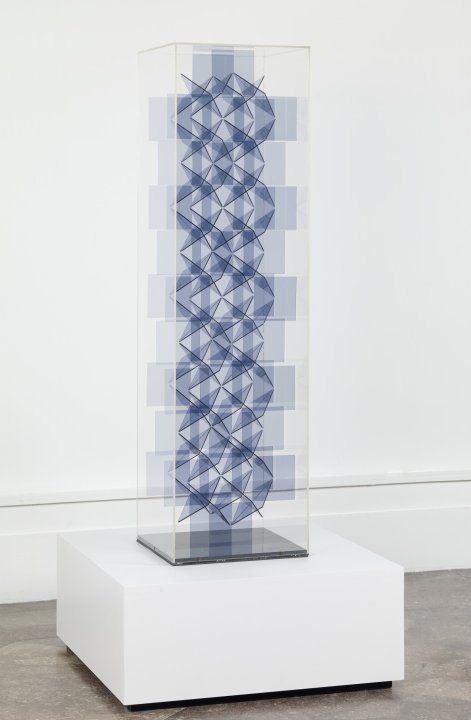Francisco Sobrino
Spanish, 1932-2014

Francisco Sobrino (Spanish, 1932–2014). Structure permutationnelle (Permutational Structure), 1963–66. Plexiglas, edition 1/3; 43 1/4 x 11 3/4 x 11 1/2 inches (109.9 x 29.8 x 29.2 cm). Collection Albright-Knox Art Gallery, Buffalo, New York; Gift of Seymour H. Knox, Jr., 1969 (K1969:1). © Estate of Francisco Sobrino / Artists Rights Society (ARS), New York / VEGAP, Madrid.
Structure permutationnelle (Permutational Structure), 1963-1966
Artwork Details
Materials
Plexiglas
Edition:
1/3
Measurements
overall: 43 1/4 x 11 3/4 x 11 1/2 inches (109.86 x 29.84 x 29.21 cm)
Collection Buffalo AKG Art Museum
Credit
Gift of Seymour H. Knox, Jr., 1969
Accession ID
K1969:1
In 1949, Francesco Sobrino emigrated with his parents from Spain to Argentina, where he went on to study at the National School of Fine Arts in Buenos Aires. It was there that he first met Julio Le Parc and other artists associated with the Groupe de Recherche d’Art Visuel (GRAV). Like his peers, Sobrino wished to imbue his art with social function, fun, and creativity. From 1960 onward, Plexiglas was the artist’s preferred medium; he was particularly drawn to the way the material lends itself to modular form. Light passes through the surface of Permutational Sculpture, creating shadows that overlap, adding to and subtracting from the overall composition. This disciplined and controlled mastery earned Sobrino the nickname of “architect of light.”
Label from Giant Steps: Artists and the 1960s, June 30–December 30, 2018
















